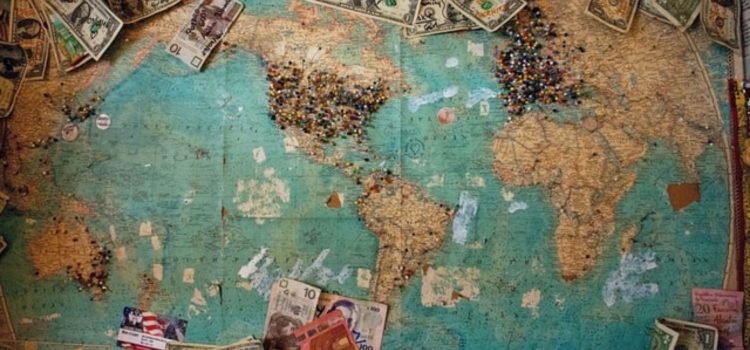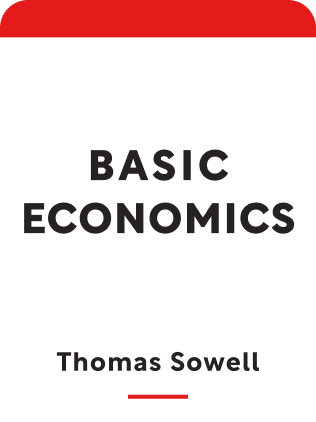

This article is an excerpt from the Shortform book guide to "Basic Economics" by Thomas Sowell. Shortform has the world's best summaries and analyses of books you should be reading.
Like this article? Sign up for a free trial here .
How does wealth get transferred between countries? What are the implications of international wealth transfers for the participating economies?
Transfers of wealth between countries take many forms. The primary wealth transfer channels include international investments (direct investment in stocks and bonds), putting money in a country’s banks, remittances from outside workers back to family, imperialists transferring wealth from nations they conquered (now more obsolete), and foreign aid.
In this article, we’ll take a look at the economics behind the primary channels of international wealth transfer.
International Investments
Capital flows from where it is abundant and cheap (in terms of interest rates) to where it is in short supply (which can offer higher rates of return).
From a social equity point of view, ideally wealthy nations would invest much in poorer nations. However, rich countries tend to invest in other rich countries – out of $21 trillion in international bank loans, only $2.5 trillion went to poor countries. (This contradicts the claim that multinationals are exploiting Third World workers – if it were such a great deal, then American investments wouldn’t be primarily investing in other rich countries.)
In practice, poorer countries discourage investments due to high risk from unstable governments and risk of confiscation, corruption, and inadequate financial infrastructure.
Trade Deficits and Surpluses
There are many problems with typical considerations of national trade deficits and surpluses.
Much is said about how excessive importing (or trade deficits) impoverish a nation because money is being transferred out of the country. This is true if a nation’s wealth is seen as its gold supply, but Adam Smith argued that the real wealth consists of its goods and services.
Trade balance is not necessarily predictive of economic health. In the Great Depression, the US had an export surplus, but both imports and exports were sharply reduced as a result of higher tariffs around the world. Nigeria has had trade surpluses in the recent past but is a very poor country.
There are also misleading accounting practices. When countries have a trade surplus, they have more of a foreign currency, which they often use to invest in the local economy of that currency. If Americans buy more Japanese goods than the opposite, then Japan gets US dollars, which often never leave the US – the dollars are invested in American factories and employing workers, or in goods like Rockefeller Center. Therefore, an American trade deficit could mean another country’s trade surplus, and those dollars are kept within the United States.
However, standard accounting practices consider only physical goods that move in the international trade balance. This ignores trade of services and investments that “don’t move” like Rockefeller Center. Thus, typical accusations of trade deficits and surpluses are often deceptive. Naturally, the US exports more services than it imports, which isn’t counted. So popular media descriptions of trade balance may be inaccurate.
Similarly, when people in other countries buy American bonds, the US can be considered a “debtor,” which sounds scary. But in reality this is a sign of faith in investments in America – the more prosperous it is, the higher the international “debt” rises. Similarly, each time you deposit $1000 into a bank, the bank is “indebted” to you for that money; and when other people invest their money in, it goes further into debt. But banks would gladly take as much money as you can offer, so they can offer more loans elsewhere.
Debt actually becomes troublesome when you run up debts beyond your means of repayment. For instance, governments may unwisely borrow money to cover the difference between exports and imports.
Finally, what matters is the size of the trade difference and level of foreign investment, relative to the whole economy. In 2011, the American trade deficit was 5% of the total GDP. In the 19th century, foreign investment financed 6% of capital formation in the US.
Remittances and Human Capital
Remittances to poorer countries account for 2.5x the value of foreign aid to those countries. These are valuable investments to the recipient countries.
There is often local controversy against immigrants who remit money back to their home countries, as though this were impoverishing local countries for benefit of foreigners. However, this ignores the fact that the remitters have generated more wealth locally than they are able to send back. When hostility leads to policies that expel immigrants, the local economy can decline.
Influx of human capital can be a huge boon, as enjoyed by the United States, while emigration can cause economic losses. Germany lost large Jewish talent in World War II to the United States. (Fun fact: around 80% of doughnut shops in California are owned by people of Cambodian ancestry.)
However, immigrants can also bring costs in terms of disease, crime, and terrorism. 2% of Japanese immigrants to the United States go on welfare, while 46% of Laotian immigrants do. Immigrants from corrupt countries tend to bring crime to their new host countries.
Imperialism
Conquerors in history have indeed enslaved populations and plundered local wealth, transferring it back to the host country. However, these funds were often used more for profligate consumption rather than investment and labor, as in the Spanish empire.
However, profits from modern European empires, like the British empire, were economically negligible – and possibly negative in value – compared to trade with other rich countries. In the early 20th century, the British invested more in the US than in all of Asia and Africa put together. Similarly, Germany and Japan lost its colonies after World War II, but, given their resurgence after recovery, the colonies were clearly not necessary for their success. Thus, the colonies might not have been meaningfully economically.
Foreign Aid
Foreign aid is a transfer of wealth from foreign governments and organizations to governments of poorer countries. It is often meant for economic development, but instead if often enriches existing politicians who entrench their influence, or funds government enterprises that lack the incentives of private enterprises.
Part of the reason foreign aid is ineffective is that poorer countries lack not just financial capital but also human capital, which is much harder to develop. The Marshall Plan in Western Europe after World War II was successful because the countries merely resumed their previous way of life, with existing human talent. In contrast, countries without existing human capital find it more difficult to effectively deploy financial capital to grow.
Further, foreign aid deployed incorrectly can cripple local economies. When the United States heavily subsidized Micronesia, many locals abandoned activities required to support themselves before. Likewise, donations of cheap excess foreign goods can cripple local economies in those industries (like donations of clothing impeding textile industries).
Much is said about how America lags other rich countries in the % of national income that is sent in foreign aid. However, 90% of the wealth transfers to poorer nations from the US takes the form of business investments, remittances, or private donations, so the total national output of foreign investment may be quite large.
Currency
Stability of currency between two nations promotes investment, while instability creates risk. For instance, a debt fixed at one currency value can become vastly more expensive if exchange rates fluctuate.
In the past, fixing multiple currencies to the gold standard allowed for more predictable stability and discouraged governments from resorting to inflation to fund spending. Similarly, pegging currencies to the dollar, or creating aggregated currencies like the Euro, allow for stability.
Further, instantaneous electronic transfers of money provide accountability for governments, since any government tempted toward inflation knows that money can flee from their economy in a moment if word gets out about the government’s bad behavior.
Much is said about “strong” and “weak” currencies, but a strong currency doesn’t necessarily mean the economy is better off. Strong currencies make exports less competitive, since their effective prices in other countries have risen, while it makes imports cheaper.

———End of Preview———
Like what you just read? Read the rest of the world's best book summary and analysis of Thomas Sowell's "Basic Economics" at Shortform .
Here's what you'll find in our full Basic Economics summary :
- Why we use money, rather than bartering our services with each other
- Why some nations prosper, while others stay poor despite vast natural resources
- How rent control might actually reduce housing supply and quality






